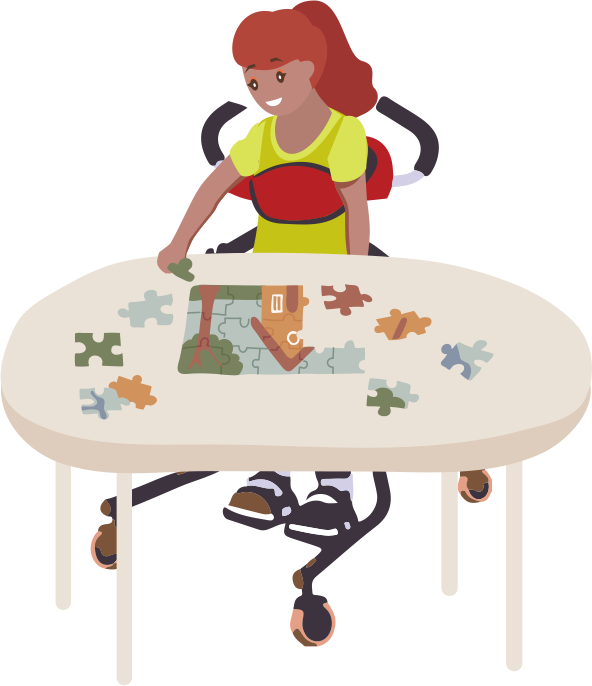Follow these 4 steps to create and implement a daily routine of uptime activities for and with the person with Rett syndrome. We have also created a downloadable version of this page which you can fill in and print out, which you can access by clicking on this link.
Step 1. Assess what activities could be possible
Assess your individual situation. Talk with family members, therapists, and support workers, and the person with Rett syndrome. Write down the answers to the following:
- What are the person’s motor skills?
- Can the person stand or walk on their own or do they need help?
- How long can they stand or walk for?
- How long does the person sit? You may consider planning breaks for movement during long periods of sitting.
- What are the person’s interests?
- Are there activities or tasks that they particularly like? For example, do they like being with people or outdoors?
- Are there activities that can provide responsibility for the person with Rett syndrome in household tasks?
- What are your usual schedules and activities?
- Think about routines when getting up in the morning, during the day, after school or activity centre, and when going to bed in the evening for uptime opportunities.
- Think about activities with siblings, friends, neighbours, etc.
- Who are your available support persons for regular uptime activities?
- Who in your family can support the person’s uptime routines?
- Are there persons at school or activity centres, or in your home or community who can support uptime routines?
- Are there other carers or people in your life who can support uptime routines?
- What equipment could help?
- Do you have the equipment that you need?
- People with Rett syndrome may use a standing frame, a walker or switches to help with activities. Click here to find out more about special equipment.
Make a list of what uptime activities could be practiced, where and when, who with, and whether new equipment is needed.

Step 2. Understand why the uptime activities are important for the person
Standing and walking activities are important for good health, mental health and quality of life. Standing and walking activities can help in many ways:
- Developing and maintaining balance, muscle coordination, fitness, and strength.
- Better motor skills for safer movements.
- Practising tasks for independence.
- Opportunities for choice and control.
- Self-regulation – walking can be calming.
- Greater inclusion in activities with others.
Make a list of why the uptime activities are important for your person with Rett syndrome.

Step 3. Set your goals
Set your goals. You can have 1 to 3 goals at a time. The goal should include:
- What activity you decide to do
- Where to do the activity
- When to do the activity
- Who to do the activity with
- Why do the activity (from Step 2)

Step 4. Make your routine of regular uptime activities
Include opportunities for standing and walking into everyday activities, even if the activities are short in duration. The moments will add up to a long period of time as the weeks and months go by. Over time, more practice of standing and walking will have important health benefits for the person with Rett syndrome. Routines are important to achieve regular activity. However, routines cannot always be followed. If a routine stops, plan to get back to your routine as soon as is possible.
